Amaryllises are popular flowers for the holidays. They start appearing on store shelves in gift and growing kits in the fall when the holiday displays go up. They make great gifts for houseplant and gardening enthusiasts, but they are also popular as alternative (or complementary) Christmas and New Year’s decorations.
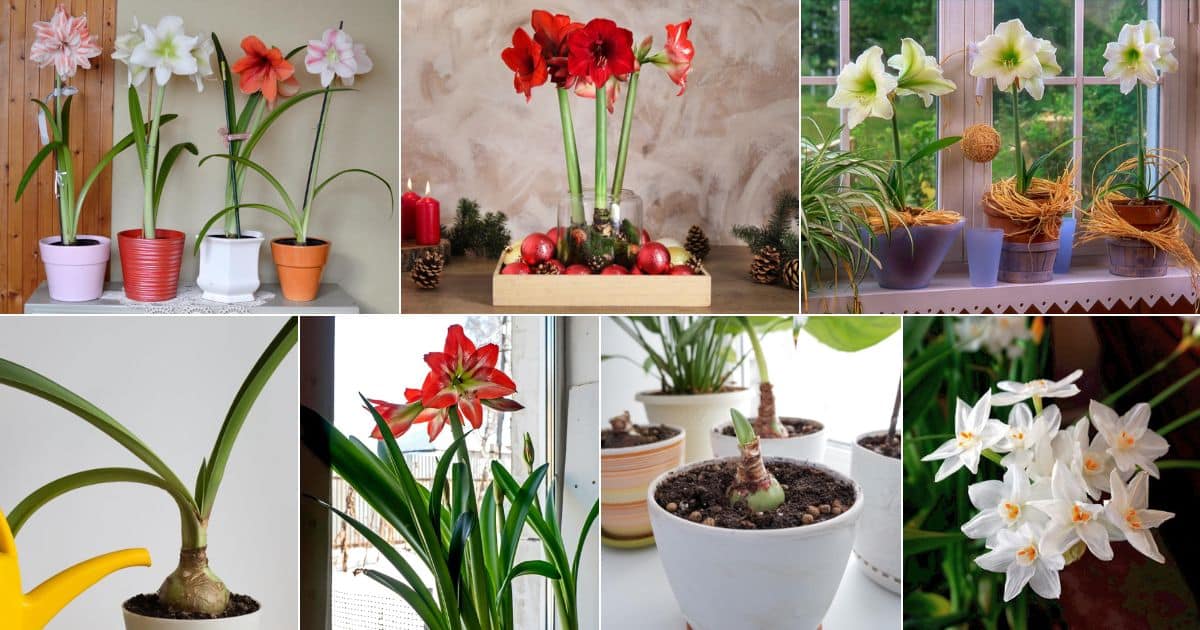
If decorations and displays are what you’re after, and you want to have your amaryllis blooming for holiday decorating, you’ll need to plan ahead and plant ahead.
When Do You Plant Amaryllis for Christmas Blossoms?

Amaryllis grow quickly and can flower anywhere between four to eight weeks after they are planted. The average is around six weeks. It’s wise to start planting in early to mid-November if you want the plant to be flowering for Christmas.
Here are some tips for a successful blooming planting:
- Amaryllises need to feel a root or pot bound to the flower. Plant your bulb(s) in a pot no bigger than one inch larger than the bulb (measured at the widest point of the bulb)
- The pot should be twice as tall as the bulb so the roots have enough room to grow
- It’s important that the pot has drainage holes
- Plant in a good quality potting mix
- An amaryllis planting kit should have all you need to start the bulb and the pot will be the right size
- The bulbs should not be completely covered—about one-third of the bulb’s top should be sitting above the soil
- When you first plant your bulb, take it to the sink and thoroughly water the plant until the soil is wetted all the way through
- Leave the pot in the sink for an hour or so to allow all excess water to drain, then put the pot on a saucer and move it to a place with bright, indirect light
- Do not overwater amaryllis bulbs
- Let the top of the soil dry out between waterings.
- Amaryllis prefers a cooler room over a warmer room (around 65 F or 18 C)
Plant More than One Bulb for More Reliable Blooms
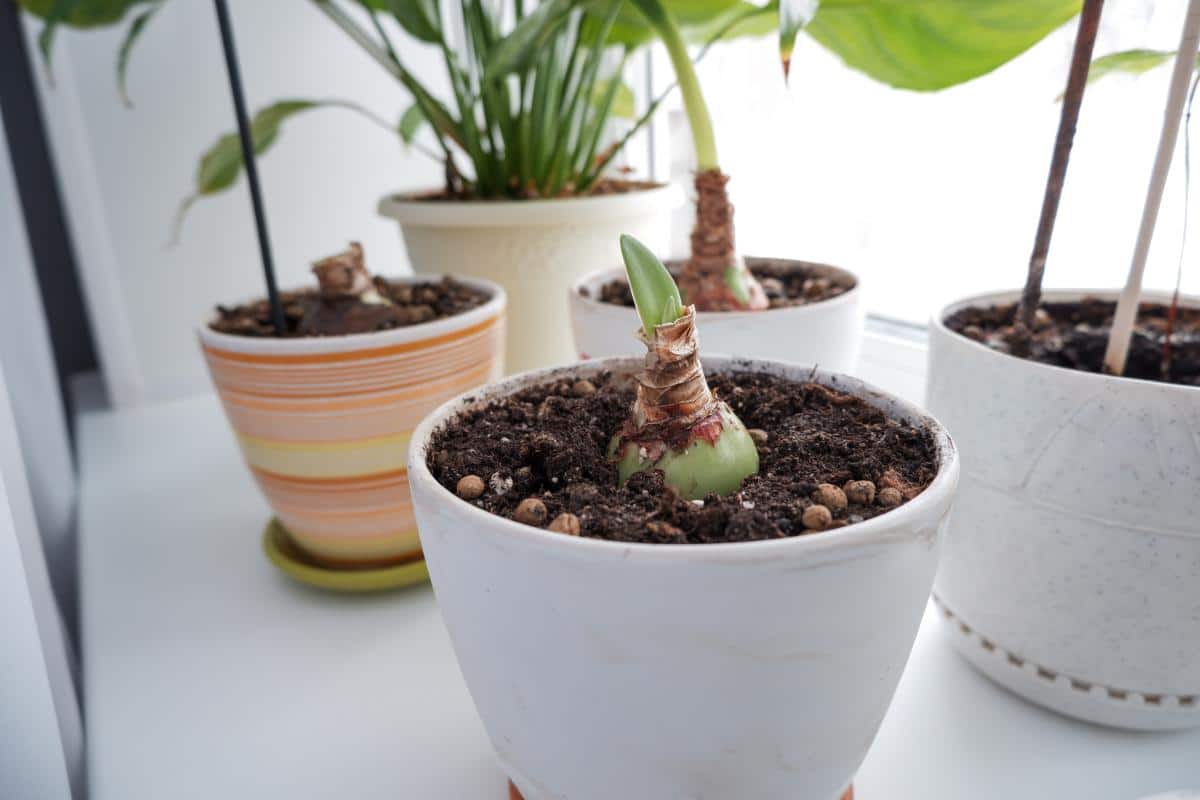
Each amaryllis blossom will last for about two to three weeks. And of course, we can plan the best we can, but everyone’s growing conditions are a little different in their home, and plants will do what each individual plant naturally does.
Doing what comes naturally, of course, means the bulbs can have a little bit of a mind of their own. If you really want to hedge your bets for blossoms for Christmas (and potentially through New Year’s), plant more than one bulb.
- The number of flowers that one bulb grows is related to the bulb size
- Choose larger bulbs for more flowers
- Flower stalks may also grow and bloom successively, so large bulbs with more flower stalks also increase the chances of having flowers for the holidays
Plant in Succession to Hedge Bets for the Right Bloom Time
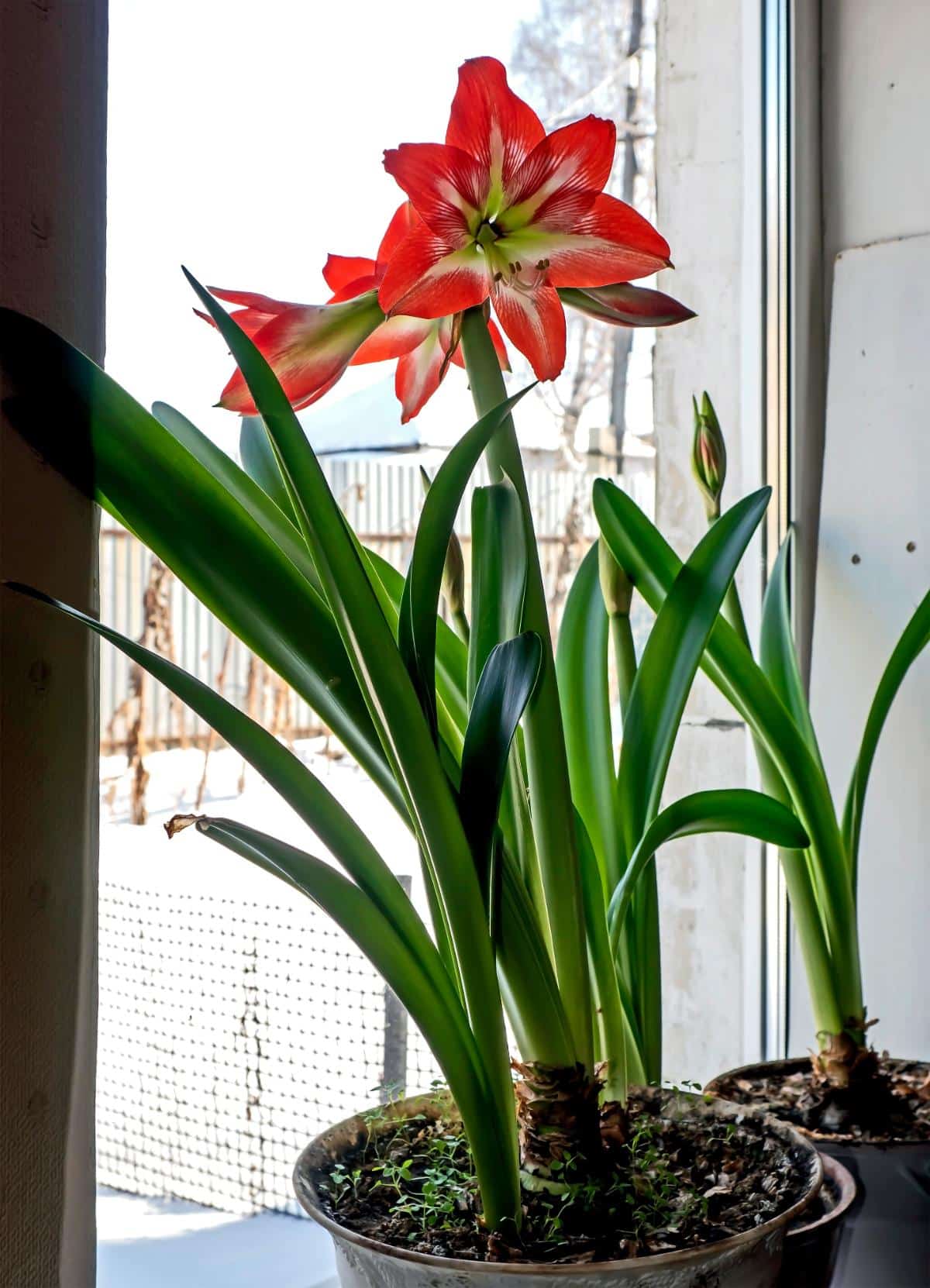
Another way to increase the likelihood of having your amaryllis bulb blossom when you want it to is to plant a few bulbs in succession.
Plant one or more bulbs every week or every two weeks. If you choose to do this, start earlier than November—mid to late October—and plant weekly or biweekly through the month of November.
At the very least, you’ll have a long succession of blooms to enjoy over many weeks. If you plant every week, you have the best chance of hitting the holidays just right.
If you plant every two weeks, you should have at least one flower in bloom consistently for as many bulbs as you started. That could mean well over a month of beautiful blooms!
- Amaryllis bulbs can be on the more expensive side, but with good aftercare, your bulb can bloom again
- Kits make planting easy, but you often can’t inspect the bulb in kits
- Bare amaryllis bulbs are cheaper, and you may be able to pick through to find the best (if you’re buying in person at a garden center or store)
- You can usually get two blooms per year; then the plant needs to die back from its foliage to store energy to grow again
- You can just be done with the plant after the first bloom and let it go dormant if you don’t care to manage it that much
Plant Different Varieties to Increase the Odds
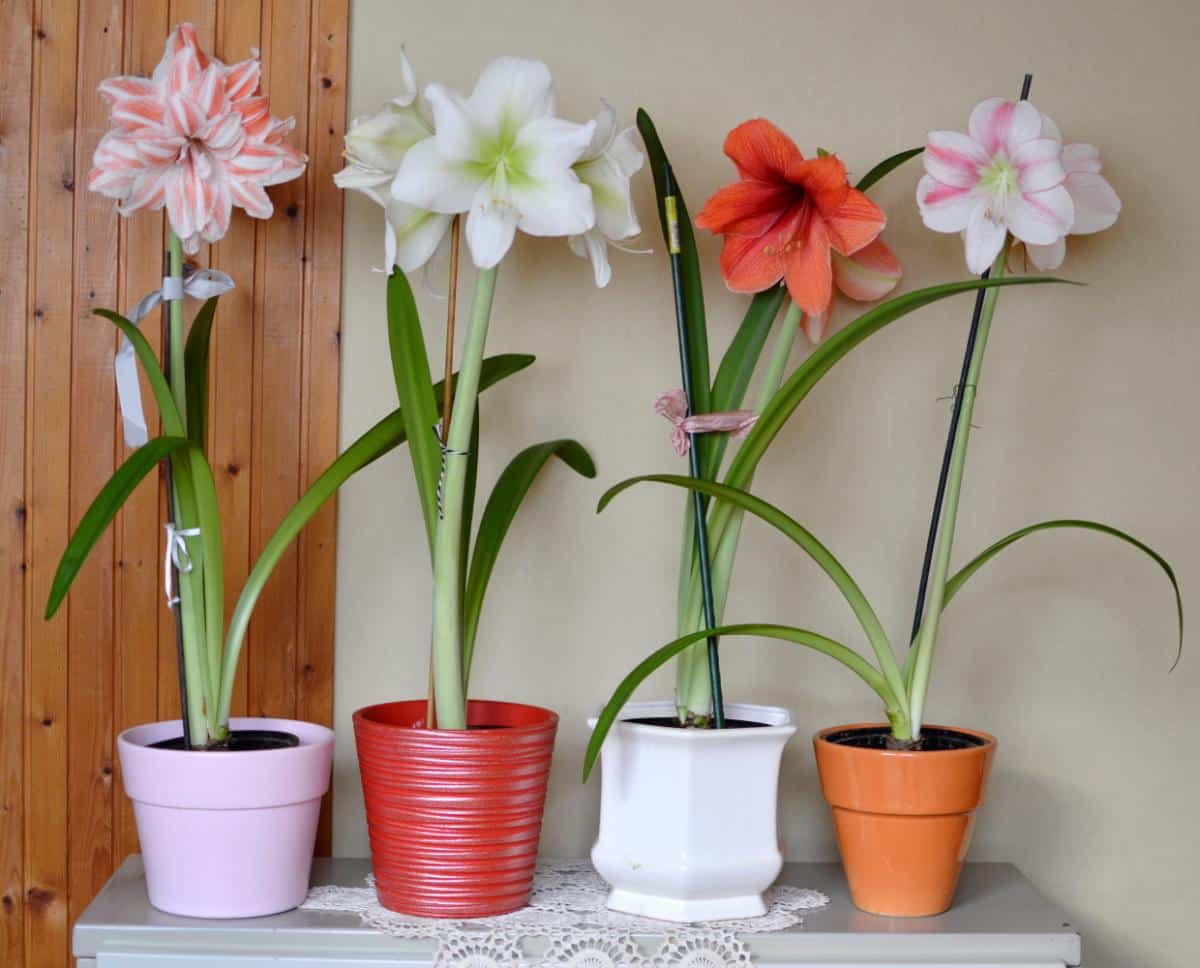
Different varieties of amaryllises have different growing and bloom times, so you can increase your chances of having blossoms on Christmas Day (or New Year’s Day, or both) by planting more than one variety.
Pick out a few that strike your fancy.
- Amaryllis bulbs can be put into dormancy after they die back
- You can save them and regrow them for many years
- You will have the widest variety of flowers by shopping for single bulbs and not kits
Fertilize Regularly to Boost Blooms
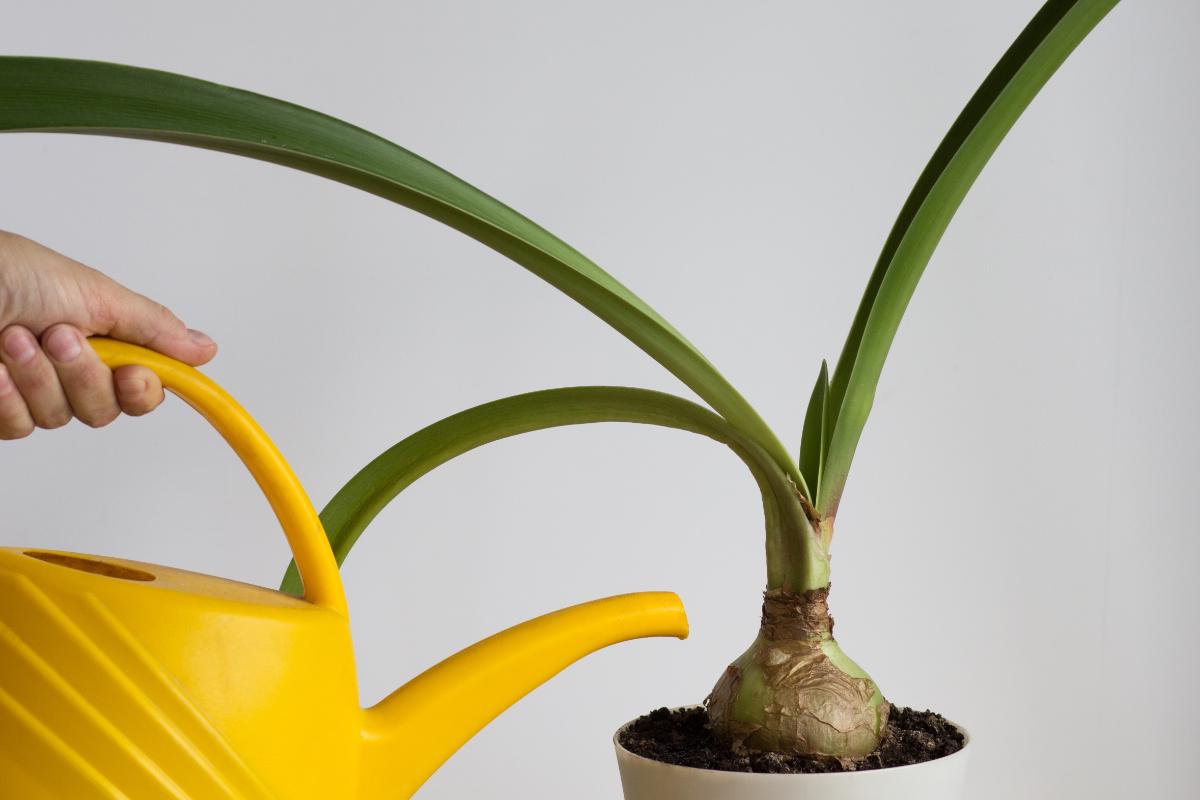
To speed up blossoming and give the plant what it needs to support those large flowers, fertilize your amaryllis every time you water it.
Start giving the bulb fertilizer in its water when you see new green growth poking out of the bulb (some bulbs come already sprouting, so fertilize those when you pot them—flowering takes a lot of energy out of a plant).
Even newly purchased amaryllis bulbs should be fertilized.
- Use a water-soluble fertilizer
- Phosphorous is what promotes blossoming in amaryllis, so choose a fertilizer with a high phosphorous content
- On the fertilizer label, phosphorous (abbreviated as “P”) will be the middle number
- For example, if the label has three numbers like 15-30-15, the middle number is the phosphorous content—the 30
- Phosphorous content should be at least as high as the other two, preferably higher
- Mix the fertilizer at half the strength recommended on the label and feed it every time you water once the plant starts growing
- Do not overwater amaryllis, or the bulb will rot
- Only water when the top inch of soil is dry
- Avoid pouring water on the neck of the bulb (the exposed part above the soil)
A Few Final Tips to Keep Amaryllis Looking Lovely
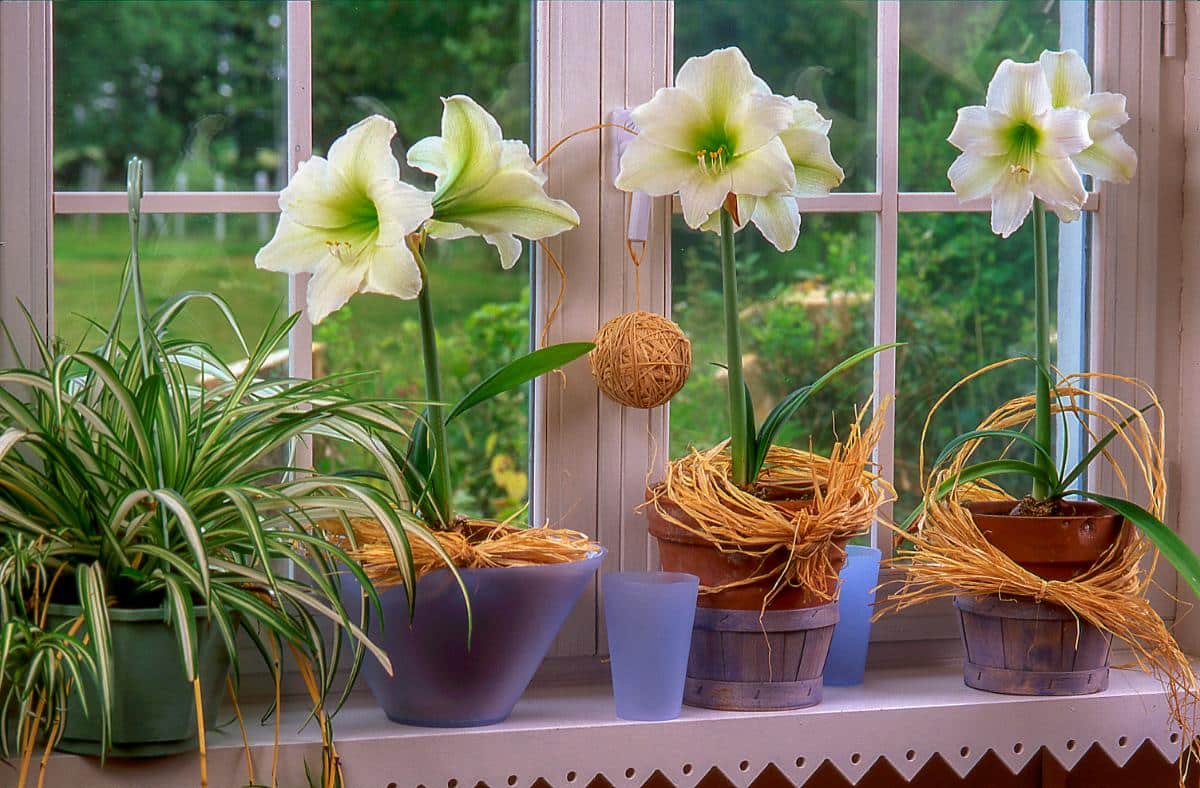
- Amaryllis grow quickly and bend toward the light, so turn the bulb every day or two, so it grows evenly and straight up
- Stalks are tall, and flowers are heavy—they can be anywhere from four to ten inches in diameter
- You may need to stake the flower stalk to keep it from bending
- Give your amaryllis a pretty topiary look by gently tying or wiring the flower stalks together at the top
- Tying also helps the stalks support each other
- You can tie flower stalks together on the stake, too, which hides the stake and lends support
- Sellers are now offering unique waxed amaryllis bulbs that are ready to grow and require no watering–an interesting option!
- Amaryllises make great gifts—give kits or start some ahead to give as grown and flowering plants
- A beautiful, blooming amaryllis is the perfect holiday hostess gift
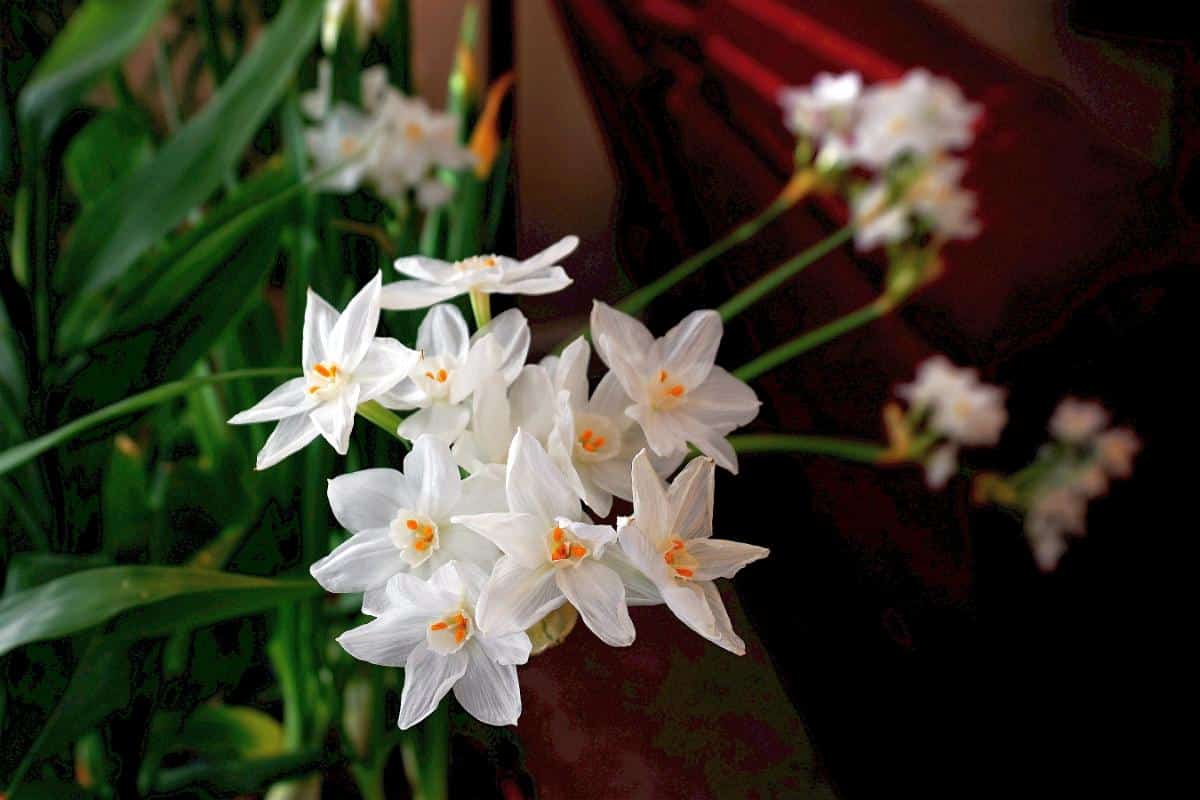
- Paperwhites are smaller but much-loved Christmas flowering bulbs, too
- Paperwhites grow similarly and in about the same bloom time as amaryllis (a little quicker)
- They complement amaryllis nicely, either together in one pot as a holiday bulb garden or set together in separate pots
- If you’re not sure if you have time to get your amaryllis to bloom exactly when you want it to, or if your started bulbs are taking longer to bloom than expected, buy a fully grown plant that is in flower at the time you want it
- You can still save the bulb from flowering full plants after it’s done to regrow for reblooming or to save for next year
“Homeless but Not Alone: Dog’s Devotion to Owner Warms Hearts Amidst Difficult Circumstances”

In the bustling heart of the city, where the rhythm of life beats loudly and the struggles of the less fortunate are often drowned out by the urban cacophony, there exists an extraordinary bond between a homeless man and his faithful canine companion, a bond that has touched the hearts of millions.
Meet Jack, a man who fell through the cracks of society, finding himself without a home, without comfort, and without hope. His days were filled with uncertainty, and his nights were spent seeking refuge wherever he could find it. But amidst the harsh realities of life on the streets, there was one constant source of solace and unwavering love – his loyal dog, Buddy.
Buddy, a scrappy yet endearing mixed breed, became Jack’s lifeline in the sea of despair. Their story was not just one of a man and his pet; it was a testament to the transformative power of companionship and unconditional love. Despite the dire circumstances they faced, Buddy remained by Jack’s side, offering him warmth on cold nights and companionship in moments of solitude.

As the seasons changed and years passed, Jack and Buddy’s story began to spread. News of their unwavering bond traveled through the city, resonating with the hearts of compassionate individuals who were moved by their plight. Communities came together, offering support in various forms – warm meals, blankets, and, most importantly, a glimmer of hope. Their tale became a symbol of resilience, teaching people that love knows no bounds, transcending social status, and reminding us all of the simple, yet profound, joy that a loyal companion can bring.
One winter, as the city was blanketed in snow, a local shelter took notice of Jack and Buddy’s story. Touched by their unwavering companionship, they offered Jack a place to stay, a warm bed, and a fresh start. Jack was hesitant at first, reluctant to leave the only life he knew, but he realized that this opportunity could provide a better future not just for him but also for Buddy.

The transition from the streets to a shelter was not without its challenges. Jack, unused to the structured environment, struggled to adapt. Yet, through it all, Buddy remained his steadfast anchor, his furry confidant who provided comfort in the face of change. With the support of the shelter’s dedicated staff and volunteers, Jack began to rebuild his life. He attended counseling sessions, acquired new skills, and slowly regained his confidence.
Buddy, too, flourished in this new environment. He became a beloved presence within the shelter, bringing smiles to the faces of residents and staff alike. His wagging tail and playful antics served as a reminder of the transformative power of love, inspiring others to adopt pets and foster the same bond that he shared with Jack.

The tale of Jack and Buddy reached far beyond the confines of the shelter and the city. News outlets picked up their story, and soon, they became a symbol of hope for the homeless community worldwide. Donations poured in to support shelters and organizations dedicated to helping both people and their pets, reinforcing the idea that no one should ever be without a home, human or otherwise.
Their journey was not without its challenges, but it was a testament to the enduring power of love, friendship, and second chances. Jack and Buddy’s story became a beacon of hope, illuminating the darkest corners of society and reminding us all that compassion and empathy can transform lives.

As the years passed, Jack found stable employment and eventually secured a modest home. Buddy, now a senior dog, continued to be his faithful companion, reminding him daily of the resilience they shared and the unwavering bond that had stood the test of time. Together, they visited schools and shelters, sharing their story and inspiring others to never lose hope, no matter how dire their circumstances might seem.
In the end, the tale of Jack and Buddy became more than just a story; it became a legacy, a reminder etched into the hearts of millions, urging them to see the humanity in every individual, regardless of their situation. Their journey served as a powerful testament to the enduring strength of the human spirit and the extraordinary capacity of animals to bring comfort, joy, and love into our lives.

And so, in the quiet moments of reflection, as Jack looked into Buddy’s loyal eyes, he knew that their story was not just their own – it was a beacon of light that had shone brightly, guiding others out of the darkness and into the embrace of compassion, understanding, and love. Together, they had taught the world that even in the face of adversity, the bond between a man and his dog could ignite a spark of hope, illuminating the path toward a brighter, more compassionate future for all.



Leave a Reply